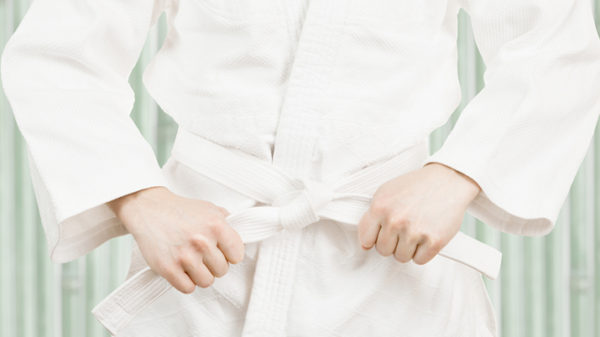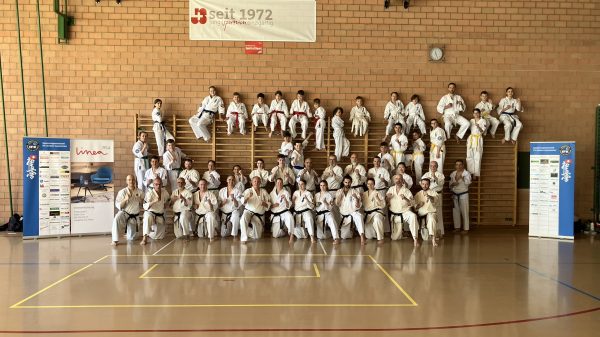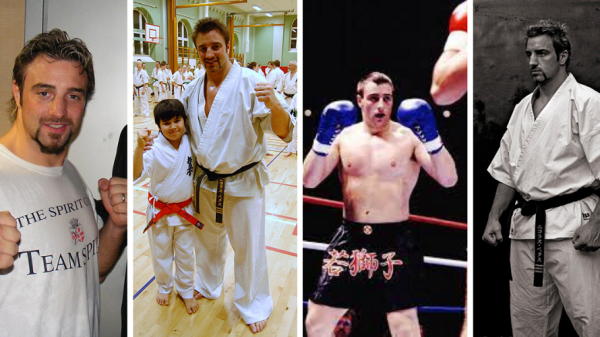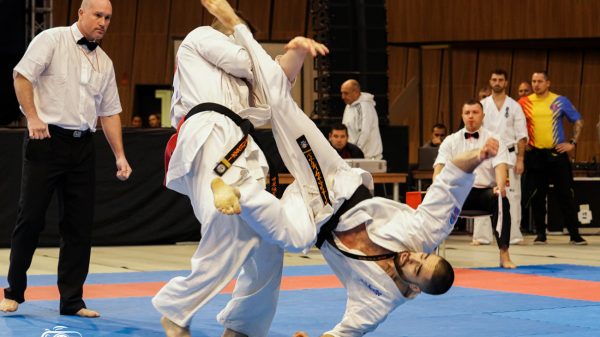Maybe you started martial arts because you want to get in better physical shape.
Maybe you want to compete in tournaments. Maybe you want to learn to defend yourself. Maybe you just wanted a new challenge. Whatever your reasons are, you will hopefully benefit from the life-changing aspects of martial arts.

Benefits notwithstanding, beginning martial arts training can be intimidating. No matter what physical shape you were in before, you will feel as clumsy as a toddler and as clueless as an earthworm at the beginning. You’ll mix up your left from your right. Sometimes you’ll feel like you’re crumbling under information overload. You’ll swear that you understand a concept, but your body just won’t cooperate. You’ll probably get frustrated, and you may even get bored…but I promise you it’s worth it!
White belt is one of the most valuable times in a martial artist’s career. With the right mindset, the time you spend as a white belt can be exciting, fun, and enlightening. It’s the time to open your mind and heart to learning, changing, and growing. It’s the time to lay the foundation of skills that will support you in your entire martial arts journey. You’ll gain a support system and make lifelong friends. You’ll feel motivated in ways you may not have experienced before. You’ll learn to trust your intuition and your newfound knowledge.
[bctt tweet=”White belt is one of the most valuable times in a martial artist’s career” username=”kwunion”]
There are a few things I wish I’d known as a white belt. Here are five tips that will help you kick start martial arts journey:
1. It’s okay to be wrong.
It’s often been said that practicing martial arts is a marathon, not a sprint. Learning martial arts can be a slow, repetitive process. You will make many mistakes, and you may embarrass yourself. You will do things wrong before you do them right, and that is perfectly fine. I recently saw this great comment on a Brazilian Jiu-Jitsu online forum: “Treat rolling like your laboratory.” Learn from your mistakes, and seek out feedback and guidance from your instructors. Embrace practicing the picky details, and treat your martial arts problems with fascination rather than frustration. You are not on the mat to win. You are on the mat to LEARN.
2. Martial arts will bring out the best in you…and once in a while, the worst.
Practicing martial arts is one of the best ways to build confidence and self-respect. It’s also very much a humbling experience. You will be tested mentally as well as physically. You may have to face some lingering bad habits or emotional demons. A tough sparring match may trigger your temper or worse, your insecurities. You may think you’re a failure or you’re not good enough to continue practicing. You will have good days, and you will have bad days, even when you are a black belt. Trust the process. Forgive yourself for your bad days, take pride in your good days, and continue the marathon.
[bctt tweet=”You are not on the mat to win. You are on the mat to LEARN.” username=”kwunion”]
3. Take care of your body.
Martial arts training can be exhausting and sometimes downright painful. You will push your body harder than you ever have before. You will get cuts, scrapes, bruises, and possibly longer-lasting injuries to your joints, bones, or muscles. You will get hit in the face, and you will fall down. You will feel like your heart is going to explode in your first sparring class, and you will sweat more than you’ve ever sweat in your life. Your ice pack, heating pad, bag of Epsom salts, and anti-inflammatory medication may become your closest allies.
Your body is your temple, your means of expression, your weapon, and your best friend. Treat it right with sleep, hydration, nutrition, and when necessary, proper medical treatment. Listen to your body’s needs. When you can push yourself a little harder, go for it. Conversely, when you need rest, do it.
[bctt tweet=”Martial arts training can be exhausting and sometimes downright painful. ” username=”kwunion”]
4. When given the opportunity to try advanced techniques, take it.
The very first time I tried a flying side kick I landed square on my bottom on a pile of stacked up kicking pads. I had recently been promoted to green belt and decided I’d try the advanced class, which was open to all belt levels above white. At the time of my spectacular debut I was very embarrassed and even wondered if I deserved my new green belt, but I stuck it out and was grateful that I had had lots of time to practice before I was expected to perform flying kicks as a red belt.
Waiting until a certain belt level to learn the “testing requirements” misses the point of training entirely. You are building a comprehensive martial arts toolbox, and the more you can learn and practice, the better. I am just as grateful for toughing it out in the advanced classes as a lower ranking color belt as I am now when I get to refine “white belt” fundamentals as a black belt.
[bctt tweet=”Every step is important, so don’t rush the process. ” username=”kwunion”]
5. Enjoy the journey.
It’s not all about belts, and it’s not all about tournaments. Black belt is certainly an exciting and worthy motivator, but the true martial arts journey is as much of a mental and spiritual trek as it is physical. Every step is important, so don’t rush the process. All the pain, plateaus, and challenges give way to triumph and growth. You will amaze yourself at how strong, confident, and skilled you’ve become. Trust the process, and enjoy the journey.
It is a great honor to practice martial arts and to wear the belt around your waist, no matter the color. Do right by your belt. Celebrate your advancements, but don’t forget your white belt foundation. Retain your white belt humility and curiosity all the way to black belt and beyond.
Author: Melanie Gibson is the author of Little Black Belt, a blog about life lessons gained through studying karate.






































